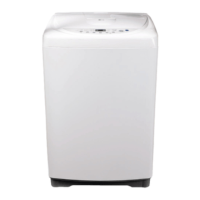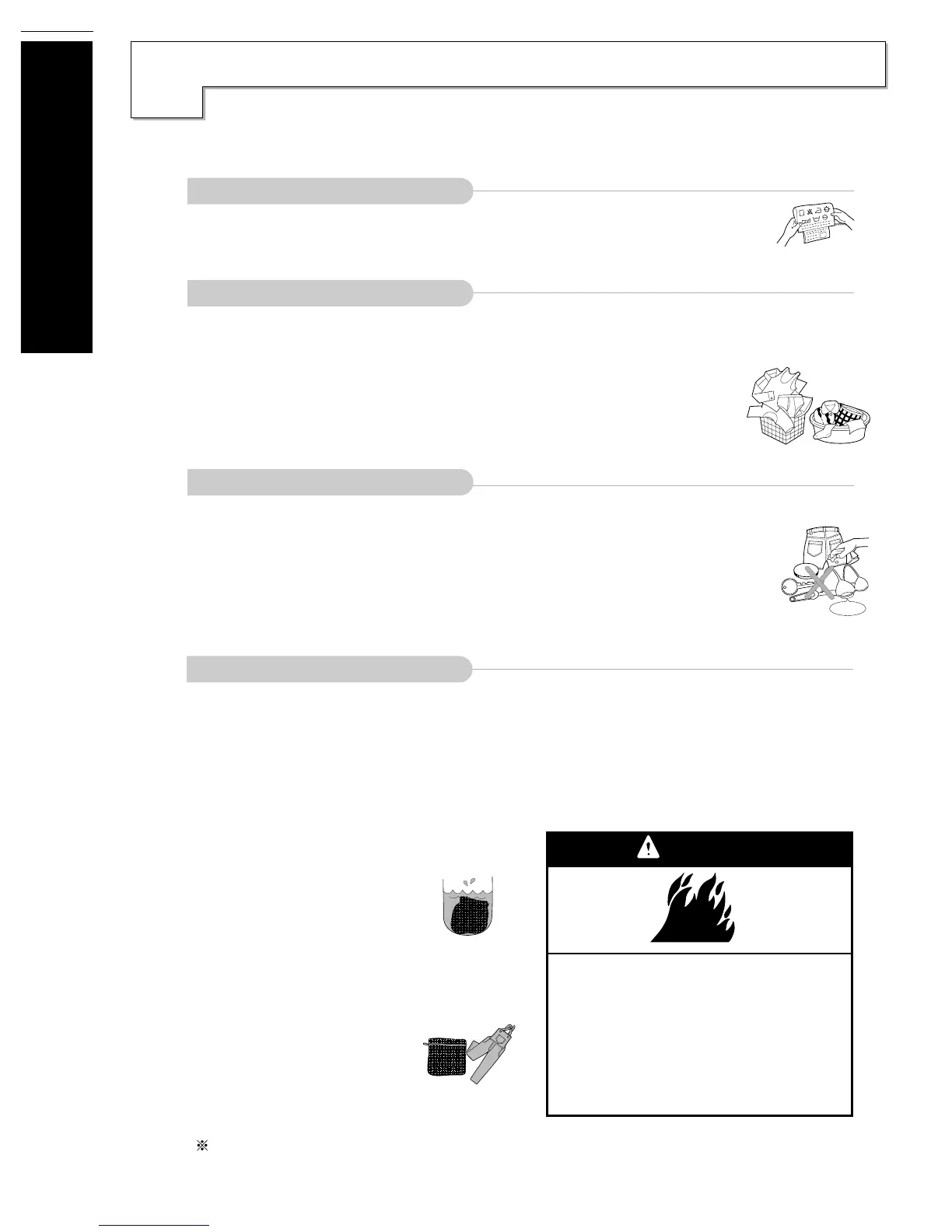
 Loading...
Loading...
Do you have a question about the LG WF-T8500TP and is the answer not in the manual?
Basic precautions to reduce the risk of fire, electric shock, or injury when using the washer.
Ensures proper grounding to reduce the risk of electric shock in case of malfunction or breakdown.
Diagram illustrating the various components of the washing machine and their locations.
Lists and describes the optional and included accessories provided with the washing machine.
Provides guidance on pretreating and removing various types of stains from laundry effectively.
Advice on handling diapers and warnings about using sanitizers in the washing machine.
Instructions on how to read and understand fabric care labels for proper washing.
Guidelines for sorting clothes and proper loading techniques for optimal washing results.
Explains how the machine detects and sets the water level automatically based on laundry quantity.
Details recommended water temperatures for different types of laundry and soil levels.
Recommendations on the types of detergent suitable for the washing machine.
Guidance on determining the correct amount of detergent and how to add it properly.
Instructions on how to add fabric softener to the dispenser for the final rinse.
Guidance on safely measuring and adding liquid or powder bleach to the machine.
Explains the steps for operating the washing machine in fully automatic mode.
Details the purpose and operation of each button on the control panel for various functions.
Instructions for operating the washing machine using manual control settings.
Explains how to lock and unlock the washing machine controls to prevent unintended changes.
Use this program for normal clothes except woolen clothes and lingerie.
Economy wash can be selected to wash lightly soiled clothes of less than 4½ lb.
Thick and heavy clothes or those which are excessively dirty like jeans or working uniforms can be washed.
Delicate clothes (lingerie, woolens, etc.) which may be easily damaged can be washed.
Selected to wash heavily soiled laundry by soaking in water for an extended period.
Explains how to lock and unlock all buttons to prevent changes by children during operation.
Instructions on how to disable or enable the washing machine's alarm sounds and buzzers.
Guidance on selecting a suitable location and ensuring the washer is level for stable operation.
Step-by-step instructions for connecting the water supply hoses to the tap and the machine.
Procedure for correctly fitting and securing the drain hose for proper water drainage.
Detailed steps for connecting the washer using the provided complete hose for a single faucet.
General maintenance advice after finishing a wash cycle, including turning off taps and unplugging.
Lists chemicals and solvents that can damage the washer's components or finish.
Tips for using fabric softener to minimize build-up and maintain machine performance.
Step-by-step guide for cleaning the inside of the tub, especially with fabric softener use.
Procedure for cleaning the filter in the water inlet valve to ensure proper water flow.
Instructions on how to remove and clean the lint filter from the washing tub.
Steps for cleaning the pump casing and filter to remove foreign objects and fluff.
Addresses common causes and solutions for lint or residue found on laundry after washing.
Troubleshooting steps for issues related to detergent not dissolving or leaving residue.
Explains the causes of black spots on clothes, including detergent and softener interaction.
Identifies causes of fabric damage such as snags, holes, and chemical damage, with solutions.
Addresses issues related to water temperature, pre-treatment, overloading, and sorting for cleaner laundry.
Explains pilling on fabrics and suggests methods to minimize it.
Solutions for clothes appearing grayed or yellowed, related to detergent, water temp, and overloading.
Explains normal operational noises and troubleshooting for unbalanced loads or leveling issues.
Checks and solutions for 'IE' error indicating a problem with water supply.
Checks and solutions for 'dE' error indicating a problem with water drainage.
Checks and solutions for 'UE' error indicating an unbalanced load or leveling issue during spin.
Troubleshooting for 'dE' error, ensuring the lid is properly closed.
Information and contact for other operational error codes like AE, PE, oF.
Outlines the warranty period, coverage, exclusions, and conditions for LG washing machines.
Provides contact details and procedures for obtaining warranty service and customer support.